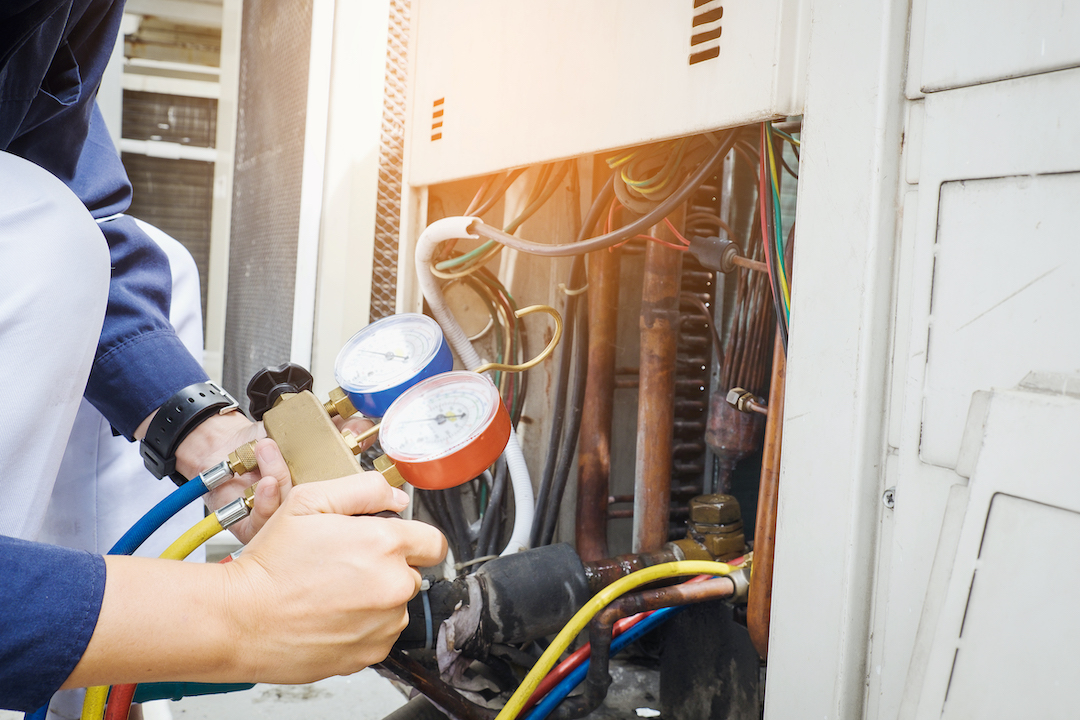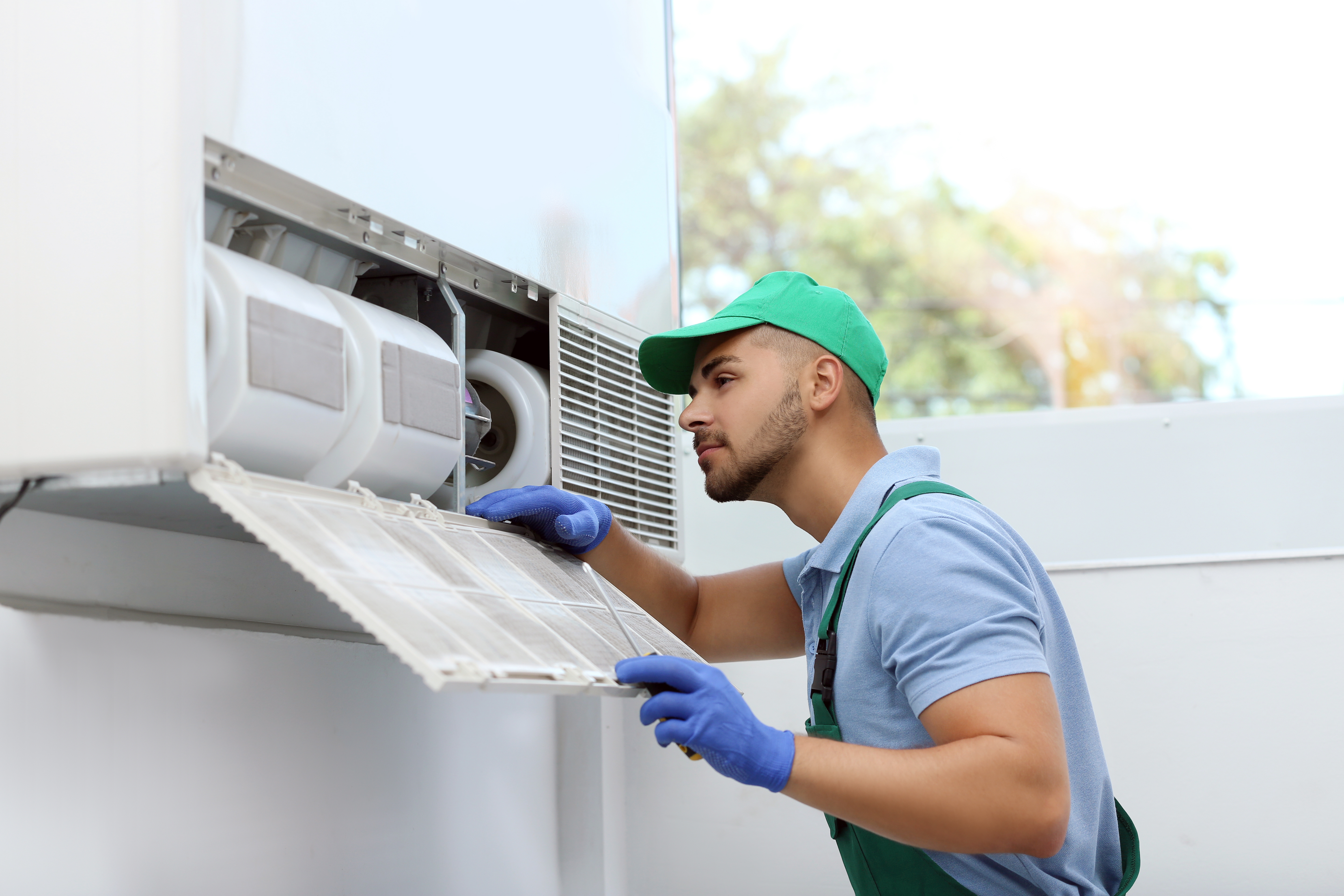Is It Time for ductless mini splits? Expert Opinions
Is It Time for ductless mini splits? Expert Opinions
Blog Article
How a Heatpump and Heating System Collaborate to Enhance Your Home's Heating Performance
Understanding exactly how a heatpump and heating system job together is necessary for property owners looking for reliable heating solutions. Each system has its toughness, supplying a well balanced strategy to home comfort. The warmth pump succeeds in modest temperature levels, while the heating system supplies rapid heat throughout extreme cold. This synergy not only minimizes energy costs yet also enhances the life expectancy of both home appliances. What factors influence this collaboration, and just how can house owners maximize their benefits?
Recognizing Warmth Pumps: How They Function
Although lots of people might be unknown with their inner operations, heatpump play an important role in contemporary heater. These gadgets operate by moving heat from one place to another, utilizing the concepts of thermodynamics. In chillier months, a heat pump extracts warmth from the outside air, ground, or water, and transfers it inside your home to heat the home. On the other hand, throughout warmer months, it can turn around the process, functioning as an air conditioning system by removing warm from inside to the outside.Heat pumps include an evaporator, condenser, expansion, and compressor shutoff. The cooling agent within the system soaks up warm as it evaporates at reduced temperatures and pressures. The compressor after that enhances the stress and temperature level of the cooling agent, permitting it to release warm as it condenses. This effective process can considerably reduce power consumption compared to typical home heating approaches, making warmth pumps a lasting option for environment control in homes.
The Role of Furnaces in Home Heating
Furnaces play a necessary duty in home heating by supplying a reputable source of warmth during the colder months. They operate by producing heat through combustion or electric resistance, dispersing it throughout the home by means of air ducts or radiant systems. The performance of a furnace is frequently measured by its Annual Gas Use Effectiveness (AFUE) score, which indicates just how properly the unit converts fuel right into heat.Furnaces can make use of numerous power sources, consisting of natural gas, power, oil, or gas, enabling homeowners to pick the most suitable choice for their needs. Unlike heatpump, which might battle in extreme cool, furnaces keep constant efficiency, making sure that indoor temperature levels stay comfy no matter outside conditions. Additionally, modern-day furnaces commonly come equipped with sophisticated technology, such as variable-speed blowers and clever thermostats, boosting their efficiency and responsiveness. This adaptability makes furnaces an essential element in comprehensive home heating techniques.

Benefits of Using Both Equipments With Each Other
Incorporating the toughness of both heating systems and heatpump can lead to a more effective and reliable home heating service. Making use of both systems enables house owners to take benefit of the warmth pump's energy efficiency throughout milder temperature levels while relying upon the furnace for even more extreme cold problems. This dual strategy can considerably decrease energy prices, as warm pumps consume much less electricity than typical home heating methods when temperatures are moderate.Additionally, utilizing both systems with each other can improve comfort levels in the home. Warm pumps can offer consistent, even home heating, while furnaces can promptly increase ambient temperature levels when needed. The combination of both systems can expand the life expectancy of tools by reducing wear and tear on each system, as they share the work. Ultimately, home owners can delight in a well balanced, cost-effective heating solution that adjusts flawlessly to varying weather, guaranteeing a cozy and inviting home throughout the cold weather.
How Heat Pumps and Furnaces Complement Each Various Other
They produce a complementary home heating system that maximizes performance and convenience when homeowners integrate warmth pumps and heating systems. Heat pumps operate by transferring warm from the outside air or ground, making them very efficient in moderate climates. They stand out during milder temperature levels, giving economical heating. Conversely, heating systems generate warm via combustion or electric resistance, delivering strong, immediate warmth during severe cool conditions.The mix of these two systems enables dynamic changes based upon temperature changes. During warmer months or milder wintertime days, the warmth pump can take the lead, saving power and reducing prices. As temperatures decline, the heater can flawlessly involve, ensuring consistent heat throughout the home. This synergy not only optimizes power usage but also boosts the lifespan of both systems, as each system runs within its ideal performance array. With each other, they produce a balanced setting that adjusts to varying climate needs.
Enhancing Effectiveness: Tips for Homeowners
Home owners can improve their heating effectiveness with numerous sensible methods. Establishing a normal maintenance timetable, integrating wise thermostat innovation, and carrying out reliable insulation and securing solutions are vital steps. These procedures not just boost convenience however additionally decrease energy expenses.
Routine Upkeep Schedule
To assure optimal home heating effectiveness, developing a regular maintenance timetable is vital for any kind of home. House owners must prioritize regular evaluations of both heat pumps and furnaces to identify peak performance. This consists of transforming air filters each to 3 months, as clogged filters can considerably minimize efficiency. Furthermore, organizing expert upkeep at least yearly permits service technicians to recognize and deal with potential concerns before they intensify. Property owners need to also cleanse the heat pump's exterior unit to protect against particles build-up that can hinder air movement. By adhering to a normal upkeep timetable, house owners not just boost their home heating systems' effectiveness visit yet likewise prolong their life expectancy, causing higher convenience and minimized energy prices throughout the colder months.
Smart Thermostat Combination
Integrating a smart thermostat into a home heater can significantly boost energy performance, specifically as it allows for specific control over temperature level setups. These gadgets can discover the home owner's timetable and preferences, immediately adjusting the temperature to optimize comfort while lessening power use. For circumstances, they can reduce home heating throughout times when the home is vacant, minimizing unneeded usage. Several clever thermostats likewise supply real-time power use data, allowing homeowners to make educated choices regarding their heating routines. Additionally, remote accessibility through mobile phone apps allows individuals to readjust setups from anywhere, guaranteeing the home is warm upon return. In general, smart thermostat integration not just enhances convenience yet significantly adds to power cost savings and efficiency.
Insulation and Sealing Solutions
Smart thermostats play a critical duty in energy performance, yet their efficiency can be greatly improved by appropriate insulation and securing remedies. Property owners should focus on protecting attics, walls, and floorings to reduce warmth loss. Premium insulation materials, such as spray foam or fiberglass, can greatly boost thermal resistance. In addition, securing spaces around air ducts, home windows, Web Site and doors avoids chilly air infiltration and warmth retreat. Weatherstripping and caulking are effective techniques for attending to these leakages - heat pump installation ooltewah tn. Normal evaluations for air leakages, together with making use of blower door examinations, can help identify problem locations. By purchasing insulation and sealing, homeowners can optimize the efficiency of their heating unit, eventually resulting in minimized energy intake and reduced energy costs
Usual Misconceptions Concerning Warmth Pumps and Furnaces
What misconceptions surround heatpump and heating systems? Many people wrongly think that warm pumps are inadequate in colder climates. In reality, modern her response warm pumps are made to operate effectively also in reduced temperatures, giving dependable home heating throughout wintertime. Another common misconception is that furnaces are always much more reliable than heatpump. This depends on the details energy resources and effectiveness scores of the devices in concern. Some might also think that using both systems all at once is unneeded, but in fact, this combination can maximize home heating efficiency, especially throughout severe climate conditions. Additionally, people commonly assume that heat pumps need constant maintenance, when truthfully, they have similar maintenance requires to conventional furnace. By debunking these misconceptions, home owners can make even more educated decisions regarding their heating alternatives, ultimately leading to boosted comfort and power performance in their homes.
Maintenance Considerations for Combined Solutions

Often Asked Concerns
Can Heat Pumps Job Effectively in Extremely Cold Climates?
Warm pumps can have a hard time in incredibly cold climates because of minimized efficiency and heat extraction limitations. Advancements in innovation have led to models designed for far better efficiency in such problems, improving their practicality in severe environments.
The Length Of Time Do Heat Pumps and Furnaces Generally Last?
Heat pumps typically last 15 to 20 years, while heating systems have a lifespan of 15 to three decades. Normal upkeep can extend their longevity, making sure efficient procedure and decreasing the need for premature replacements.

What Is the Average Expense of Installing Both Solutions?
The average cost of mounting both a heatpump and a furnace normally varies between $5,000 to $10,000 - furnace replacement. Elements influencing this cost include system dimension, installation intricacy, and regional labor rates
Are There Tax Motivations for Utilizing Energy-Efficient Heating Systems?
Numerous homeowners ask about tax incentives for energy-efficient heating systems. Various government and state programs commonly use rebates or credits, urging the fostering of sustainable modern technologies to decrease power usage and promote ecological obligation.
How Do I Pick the Right Size Heatpump and Heater?
Choosing the best size warmth pump and furnace entails determining the home's square footage, considering insulation top quality, and assessing regional environment. Consulting a specialist can guarantee suitable system efficiency and power effectiveness based on particular requirements. ductless mini splits. Understanding just how a warm pump and furnace job with each other is crucial for homeowners looking for effective home heating remedies. In colder months, a heat pump essences warm from the outdoors air, ground, or water, and transfers it inside your home to warm the living area. When house owners integrate warm pumps and heating systems, they create a complementary home heating system that makes best use of effectiveness and comfort. Warm pumps operate by transferring heat from the outside air or ground, making them very efficient in moderate climates. Heat pumps can struggle in extremely cool environments due to minimized efficiency and warmth extraction restrictions
Report this page